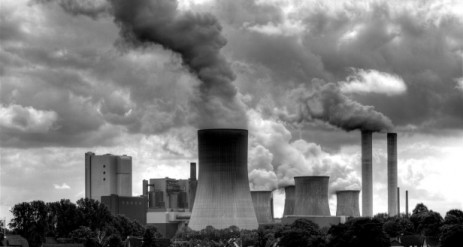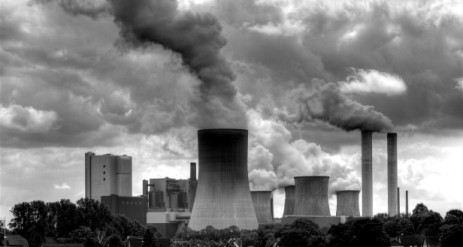 Photo: daviptA word on the EPA announcement today, since as usual most of what I read in the mainstream press is obscure or misleading. Also, everyone feels the need to quote History’s Greatest Moron, James Inhofe. Why is that?
Photo: daviptA word on the EPA announcement today, since as usual most of what I read in the mainstream press is obscure or misleading. Also, everyone feels the need to quote History’s Greatest Moron, James Inhofe. Why is that?
Today’s announcement wasn’t a huge deal — it’s just a timeline, albeit a timeline that industry will complain is too fast. But the larger subject of greenhouse gas regs for existing pollution sources like power plants and oil refineries is a big deal. Here’s the scoop:
To keep all these EPA news dribbles straight, it’s helpful to remember that when it comes to regulating greenhouse gases from stationary sources (power plants, factories, everything but vehicles), EPA is proceeding on two separate tracks.
The first track is a permitting program for new (or substantially upgraded) sources. That’s what most of EPA’s announcements to date have been about. For instance, its “Tailoring Rule,” released in May, had to do with which sources will need to get permits (basically, very large sources). Then, last month, it issued “PSD and Title V Permitting Guidance for Greenhouse Gases” (just as riveting as it sounds), which detailed how the permitting program would be run. (It will effectively be run just like existing permitting programs, through the states.)
So anyway, there’s that track, which is mainly about new sources. For a good time, dig into EPA’s page on Clean Air Act Permitting for Greenhouse Gases.
Today’s announcement, by contrast, was about the second track, which will apply to existing sources. It’s easy to miss this, since the standards that would apply to existing sources are called … wait for it … New Source Performance Standards (NSPS). Helpful naming there, right?
New Source Performance Standards apply to a wide range of sources, but today’s announcement was just about two of the biggest: power plants and oil refineries, which together account for about 40 percent of U.S. greenhouse gas emissions. EPA didn’t announce the standards themselves, but rather a timeline for when they will be announced and implemented. (For power plants, standards will be announced in July of next year, finalized in May 2012; for refineries, standards announced in December of 2011, finalized in November 2012.)
Today’s announcement means that a lot of existing sources that were “grandfathered” (i.e., exempted) under the original Clean Air Act — in particular, dirty old coal plants — are now going to have to clean up for the first time ever. That’s a sea change.
Bottom line: This latest development is one more step in the march toward finally getting large existing sources of greenhouse gases and other air pollutants to clean up. But the real action will come next year, when the standards themselves are announced. Stay tuned!



